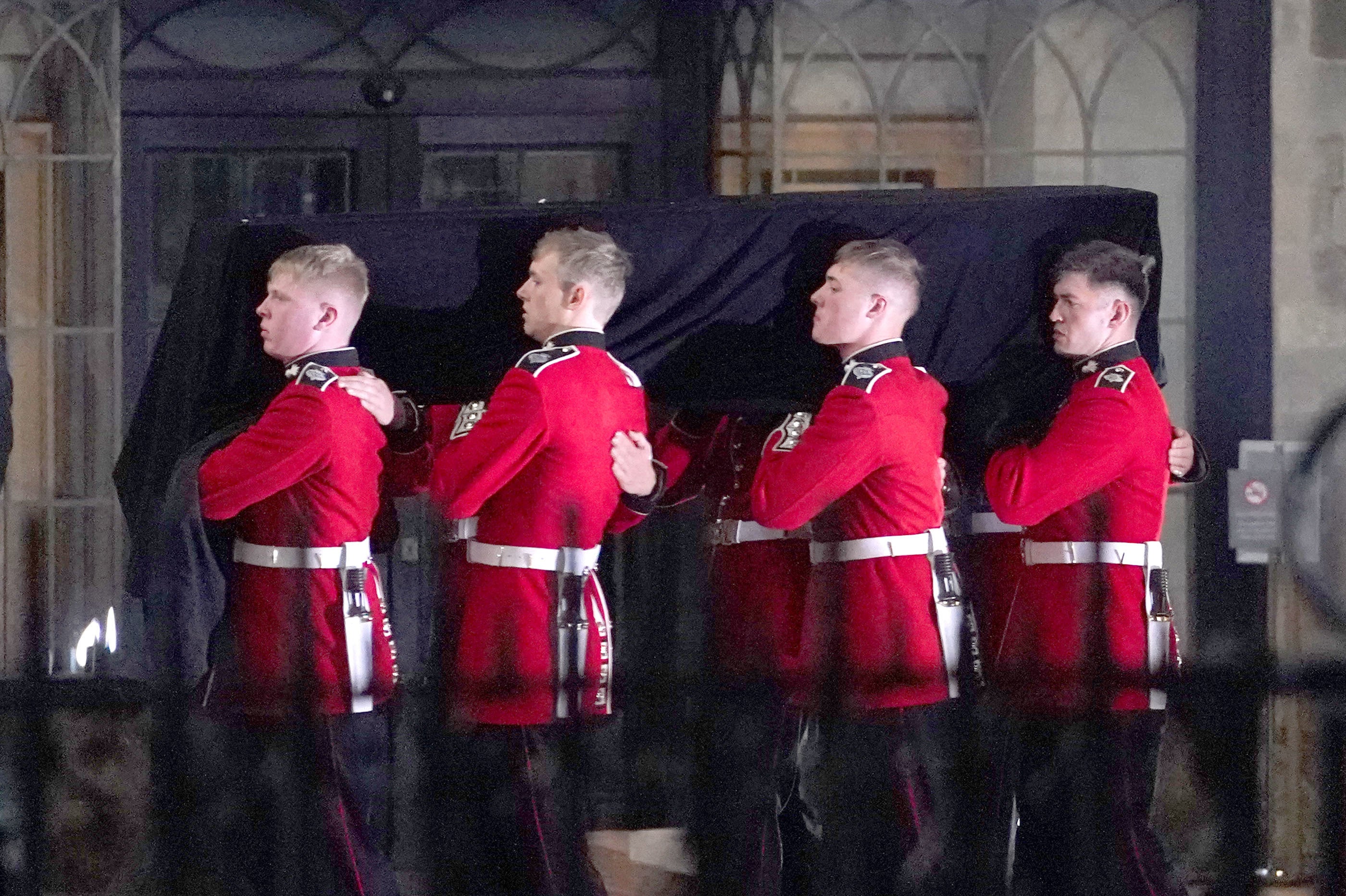Forces stage early-hours rehearsal for Queen’s funeral procession
The State Gun Carriage, towed by almost 100 naval personnel and bearing a black coffin, travelled through central London.

Final preparations for the funeral of Queen Elizabeth II are taking place in London, as thousands of military personnel took part in a full rehearsal for the procession of her coffin from Westminster Hall to Wellington Arch.
The rehearsal took place before sunrise on Thursday morning, and saw the State Gun Carriage, towed by almost 100 naval personnel and bearing a black coffin, travel from Westminster Hall, on to Westminster Abbey, and then through central London.
Hundreds of mourners who had waited in line overnight to visit the late monarch lying in state left Westminster Hall to see the thousands of military personnel in ceremonial uniform taking part in the preparations for Monday’s event.
The sound of bagpipes began at 2.45am, signalling the start of the procession and echoing through the quiet streets of London.
The Scots Guards marched away from New Palace Yard and on to the Abbey, and were followed by the sailors pulling the gun carriage using white ropes, and several members of the Household Cavalry on horseback.
Four soldiers stood either side of the coffin as it was taken into Westminster Abbey, where indoor procedures were also rehearsed.
Mournful brass and drums heralded the coffin leaving the Abbey, and the procession began its next journey, along Whitehall on to Wellington Arch.
Many of London’s streets had been sealed off for the operation, and several police officers marshalled members of the public out of Westminster Hall and away from the closed roads.
The drums and trumpets of the procession could be heard from streets away, as the rest of the city remained largely silent.
At around 5.20am, the sound of brass playing God Save The Queen rang out from under the arch, before the state hearse departed through the Apsley Gate of Hyde Park between rows of Household Cavalry.
The procession continued to play in the half-light, and Beethoven’s Funeral March and the hymn Jerusalem could be heard before the sun came up.
Given the time of day and the extensive road closures, a far smaller crowd was present for the end of the rehearsal at Wellington Arch.
However, a few had managed to rejoin the procession near Hyde Park after seeing the stepping off in Westminster, and stayed out in the cold until its conclusion.
Aidan Conway, from Islington, watched the rehearsal and told the PA news agency: “I was in the West End at the theatre and I went for a little night cycle just down the Mall out of interest, maybe to see the flowers.
“A policeman told me there was going to be a rehearsal at 2.30, helpfully, so I thought I’d stick around.”
He added: “It’s peaceful. It’s not the real thing, but I think it’s almost closer than you’re going to get to the real thing unless you’re going to queue for a day.
“The city at night is incredible anyway, it’s beautiful. The rehearsals are quite remarkable.”
The state funeral will take place in Westminster Abbey at 11am on Monday, before the procession makes its way to Wellington Arch and then on to Windsor Castle.
A committal service will then be conducted in St George’s Chapel in Windsor.